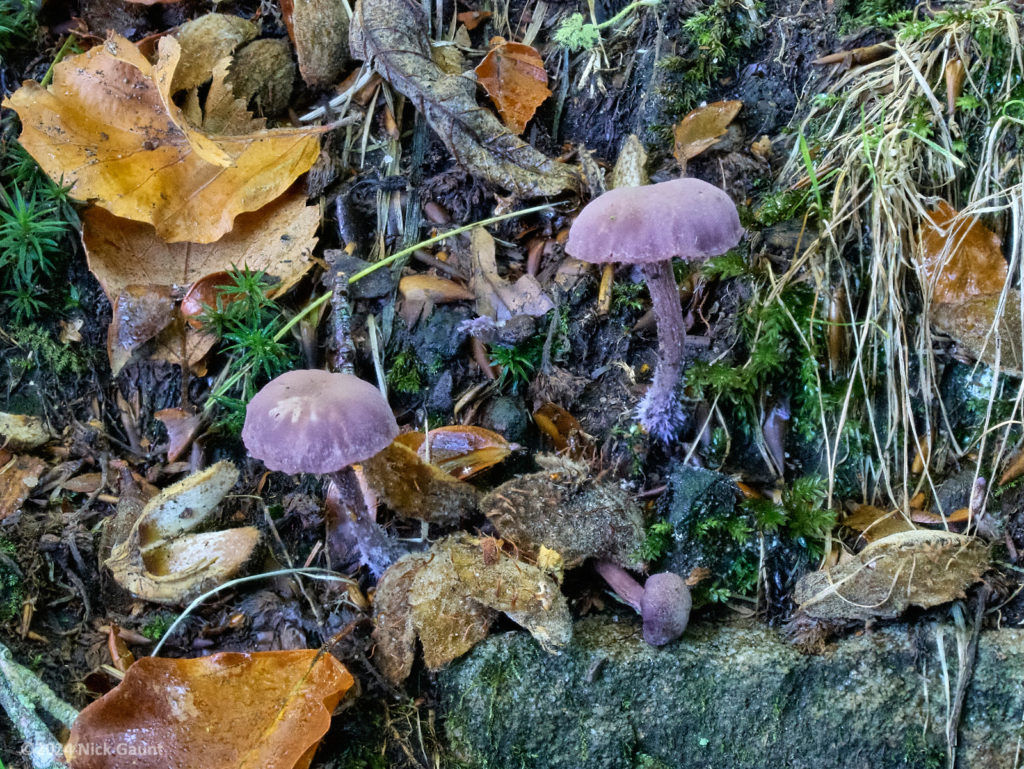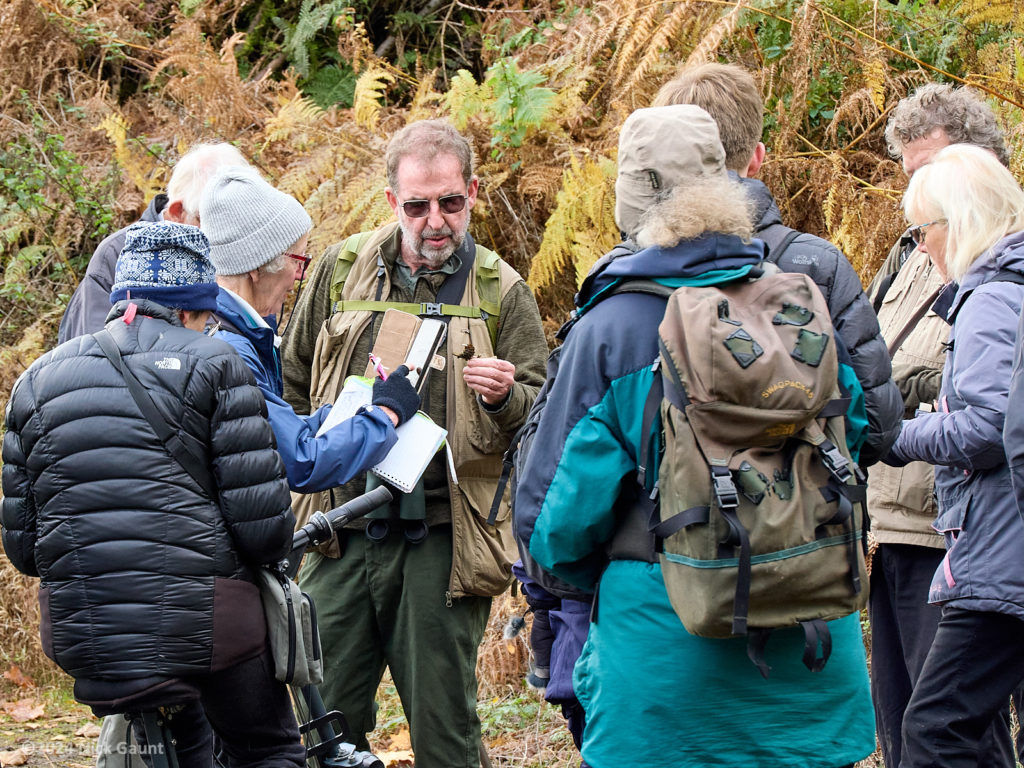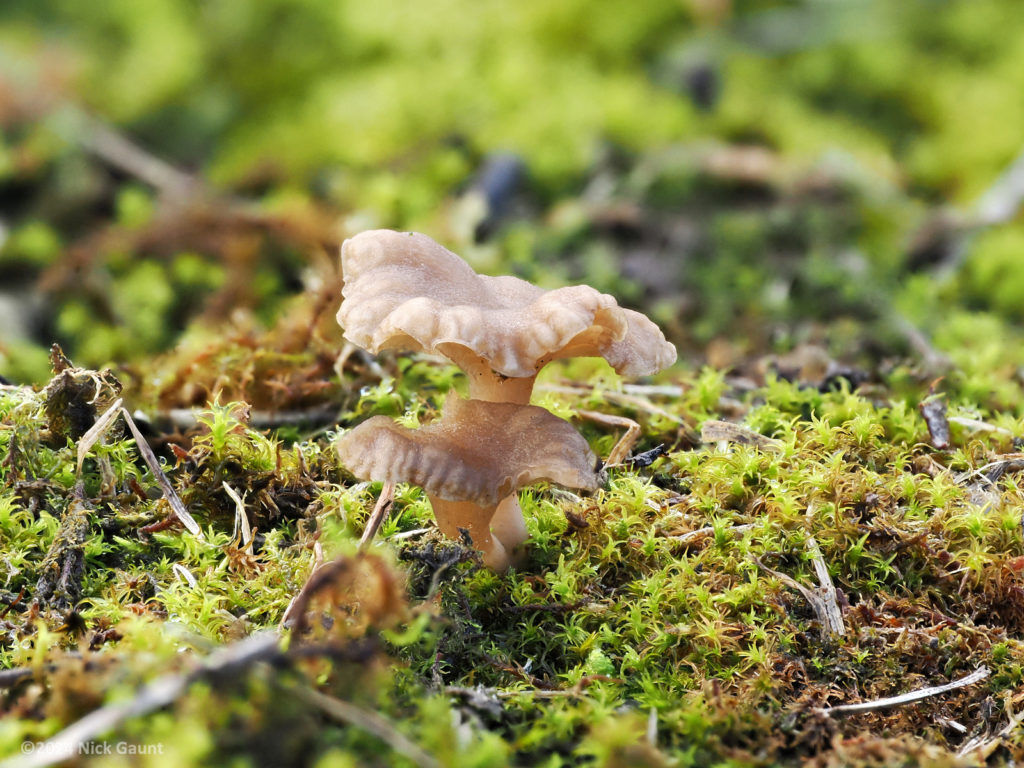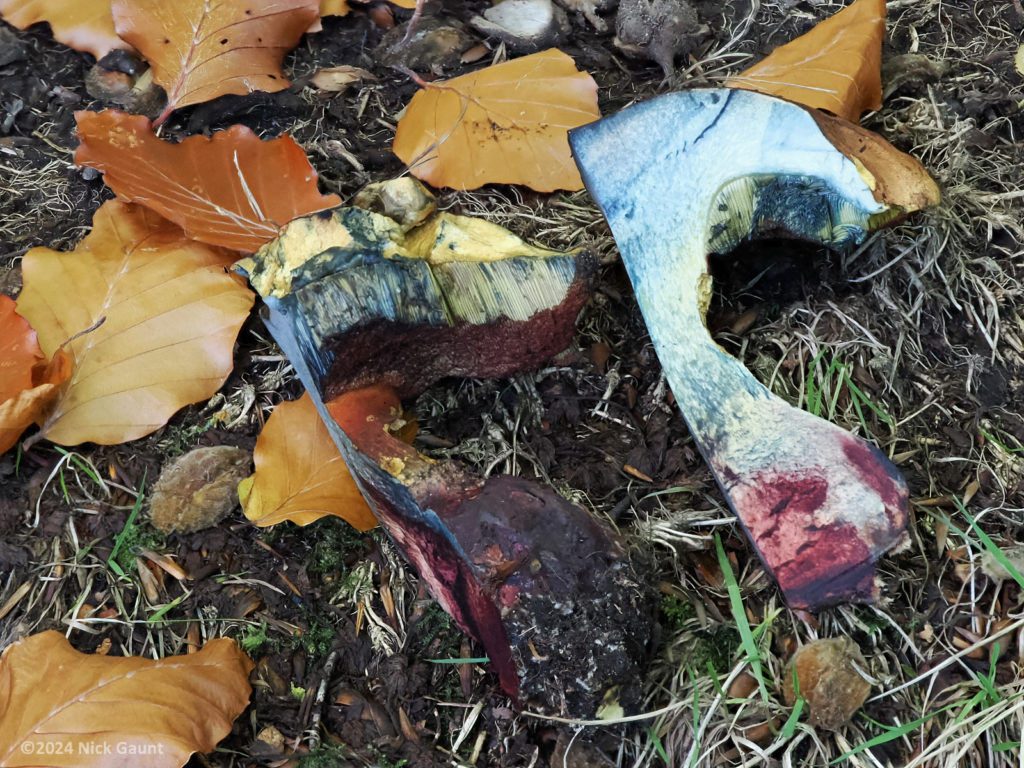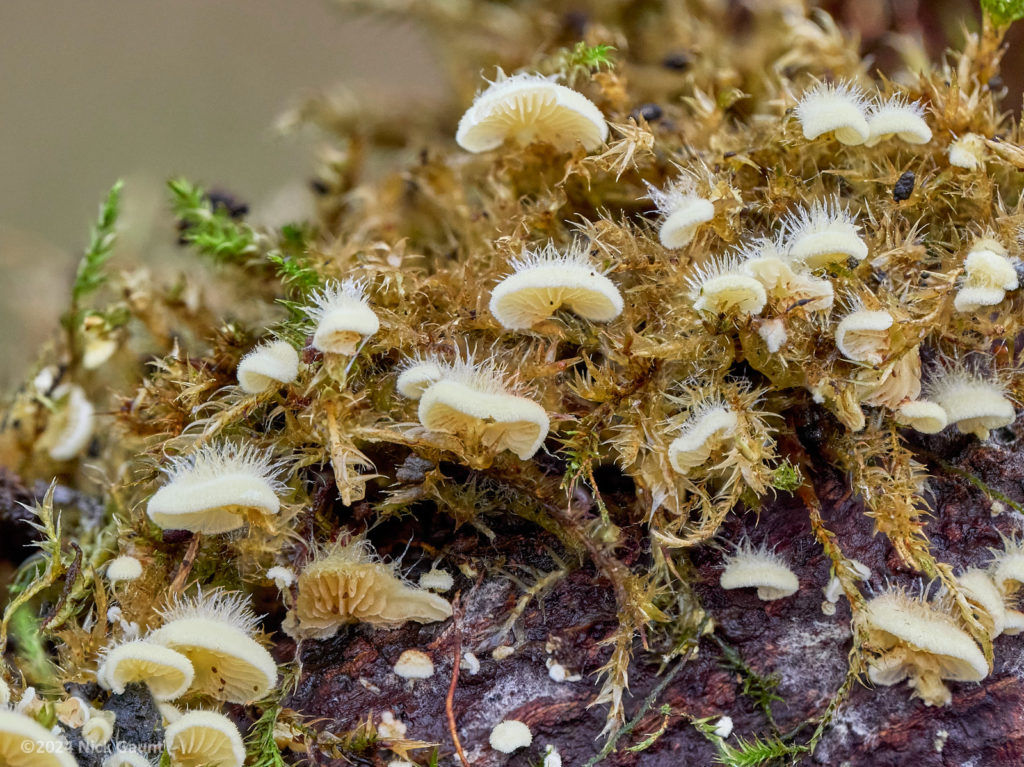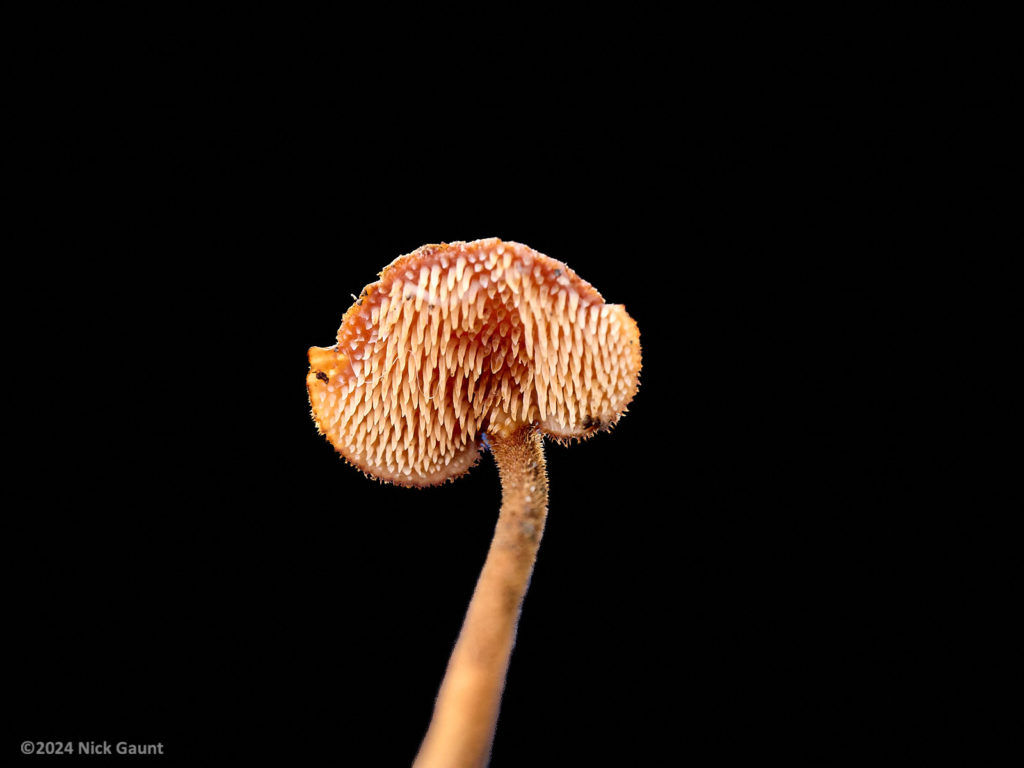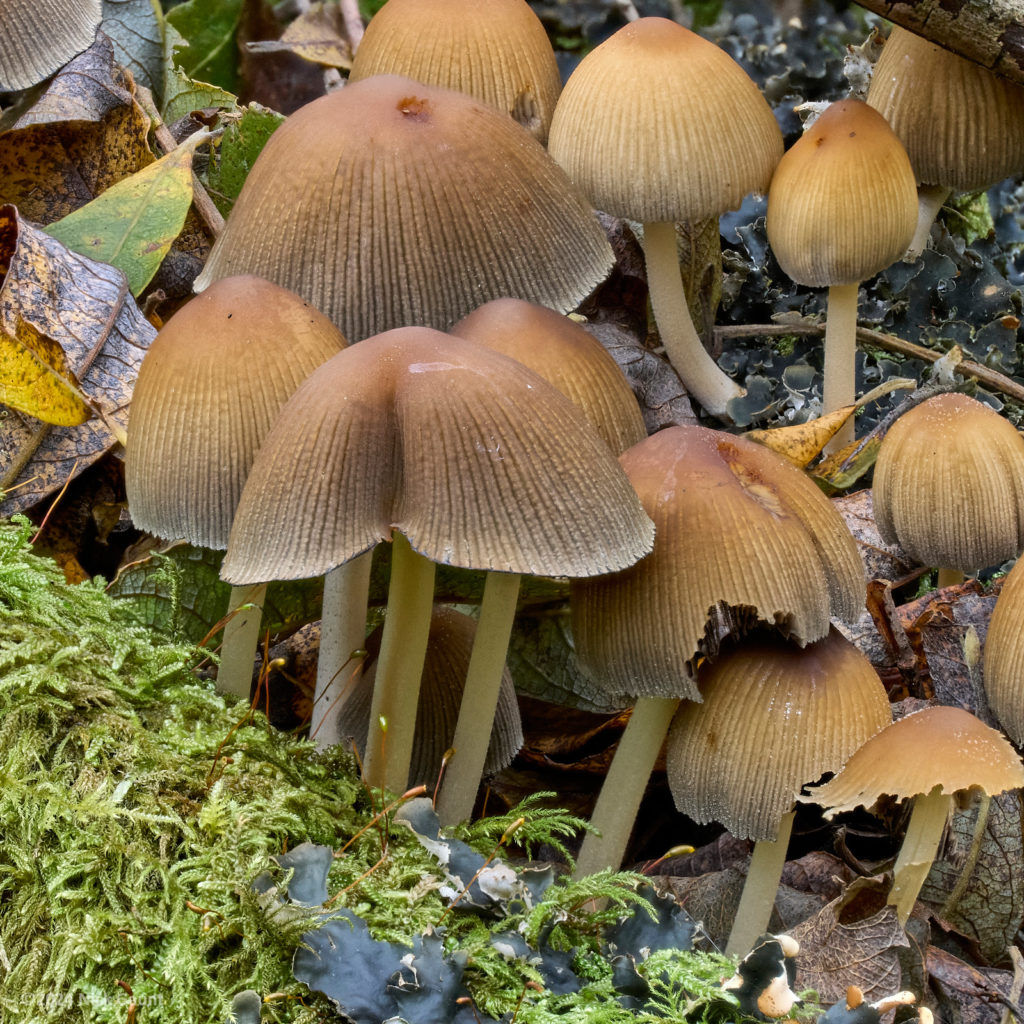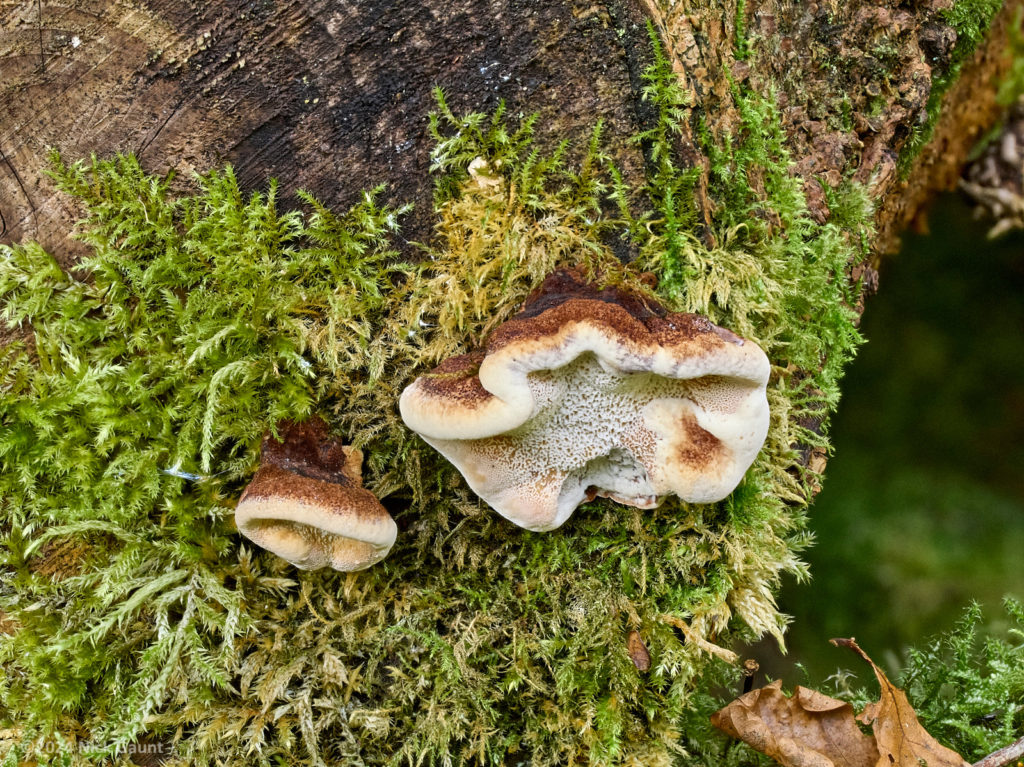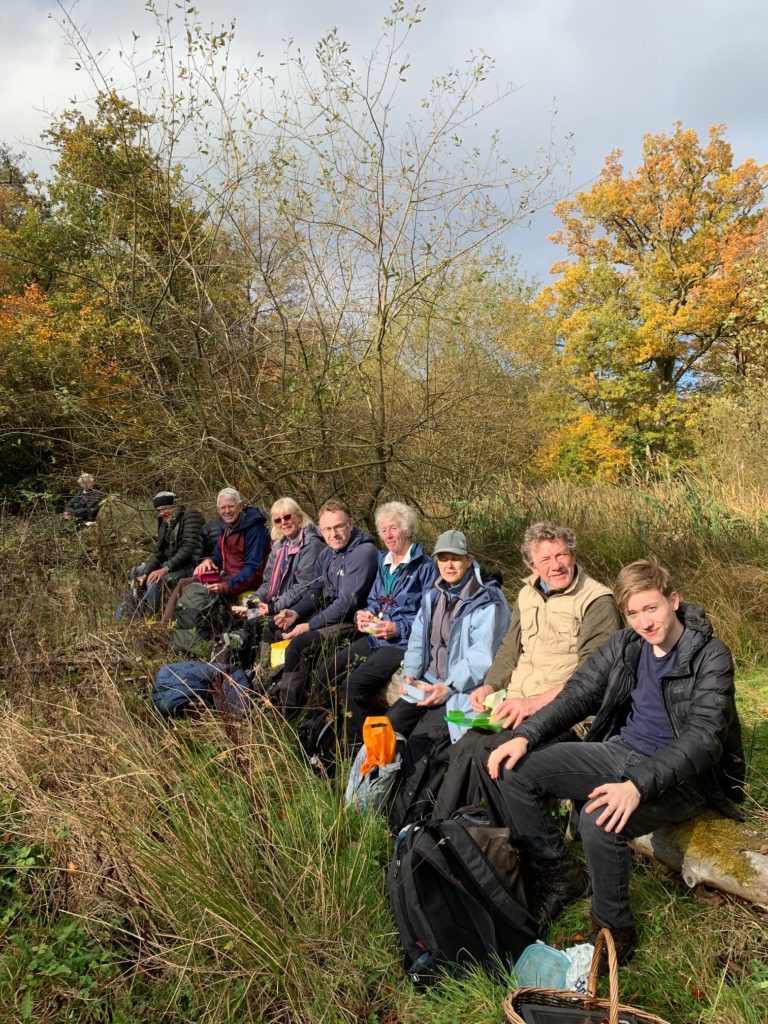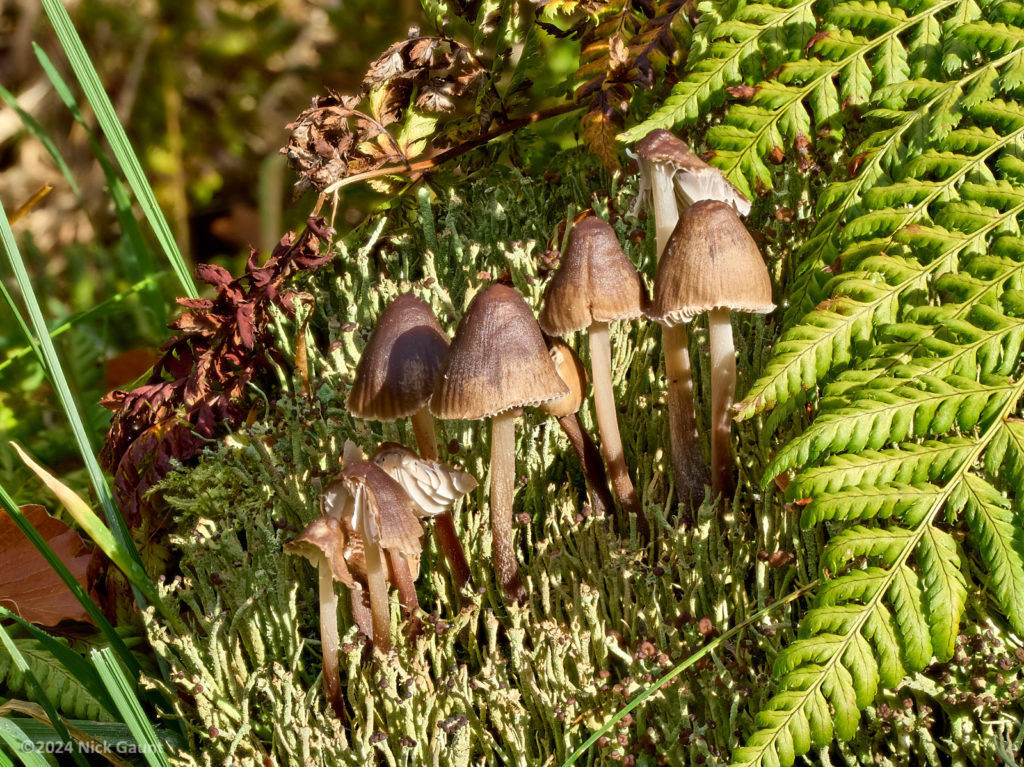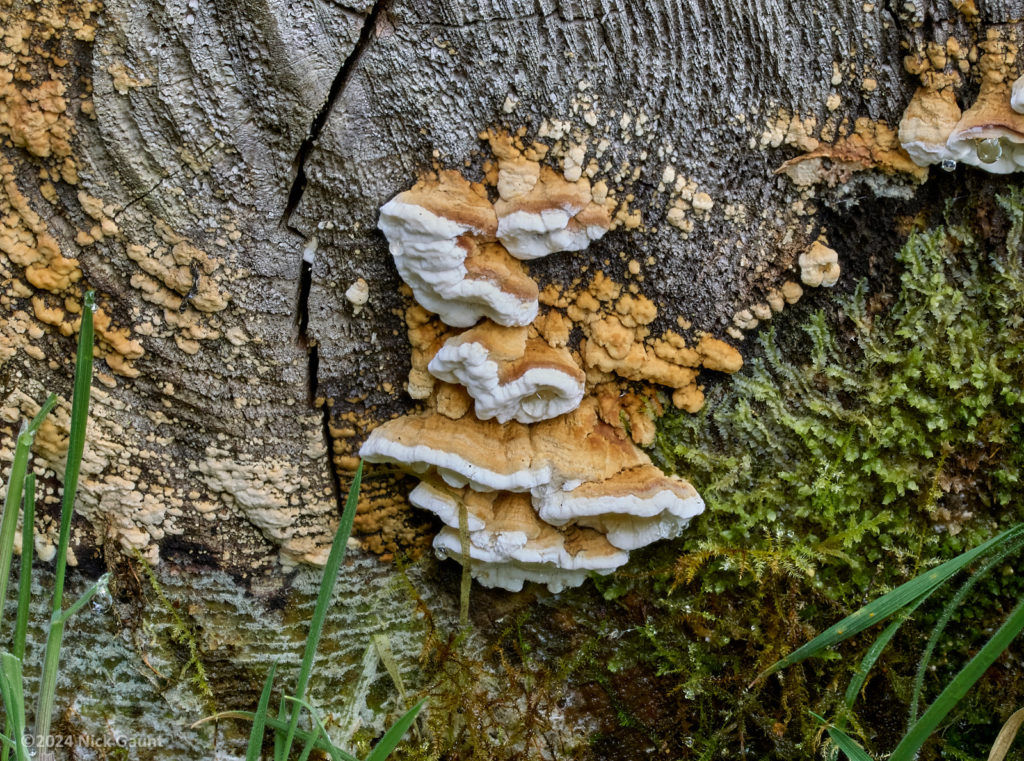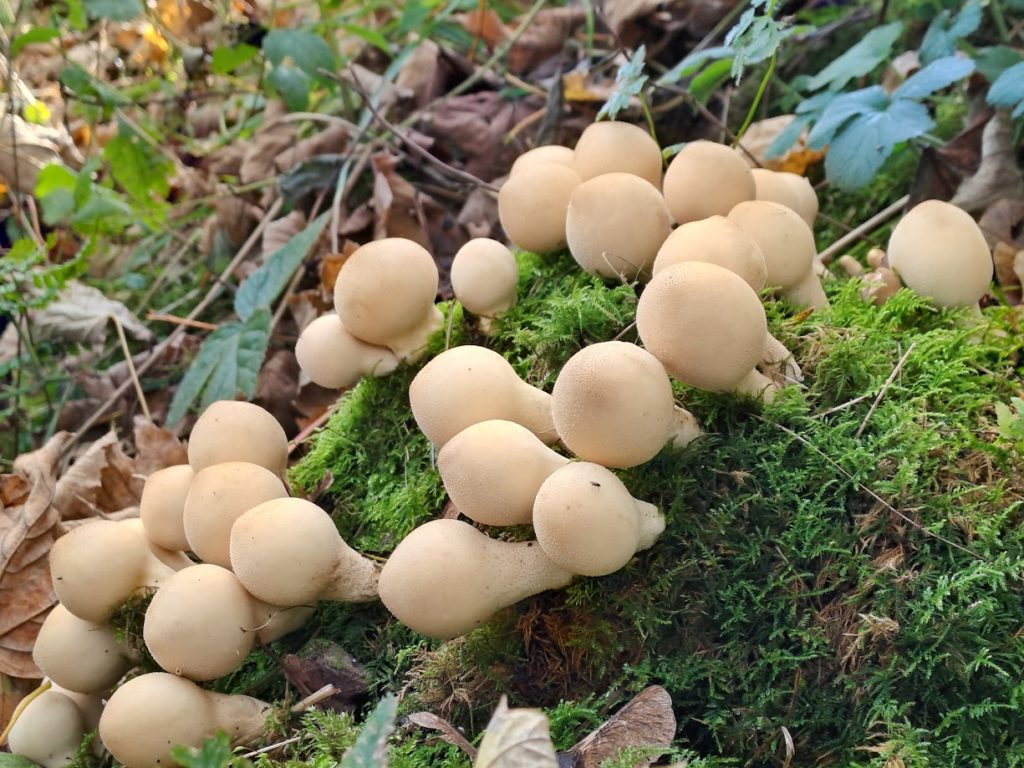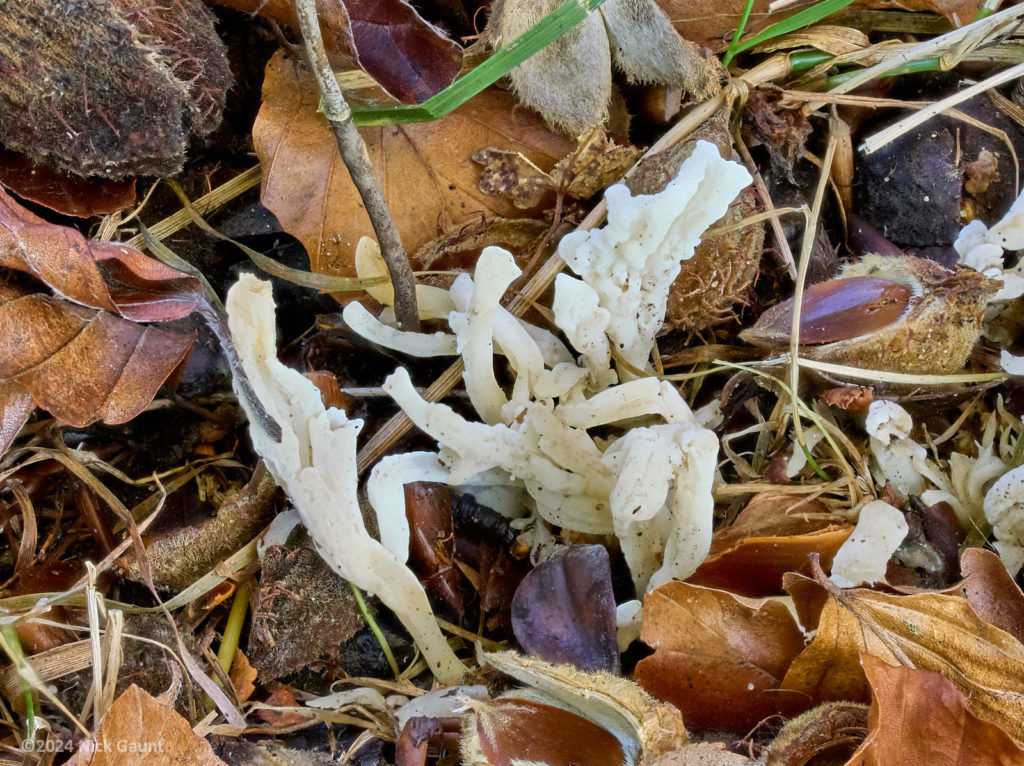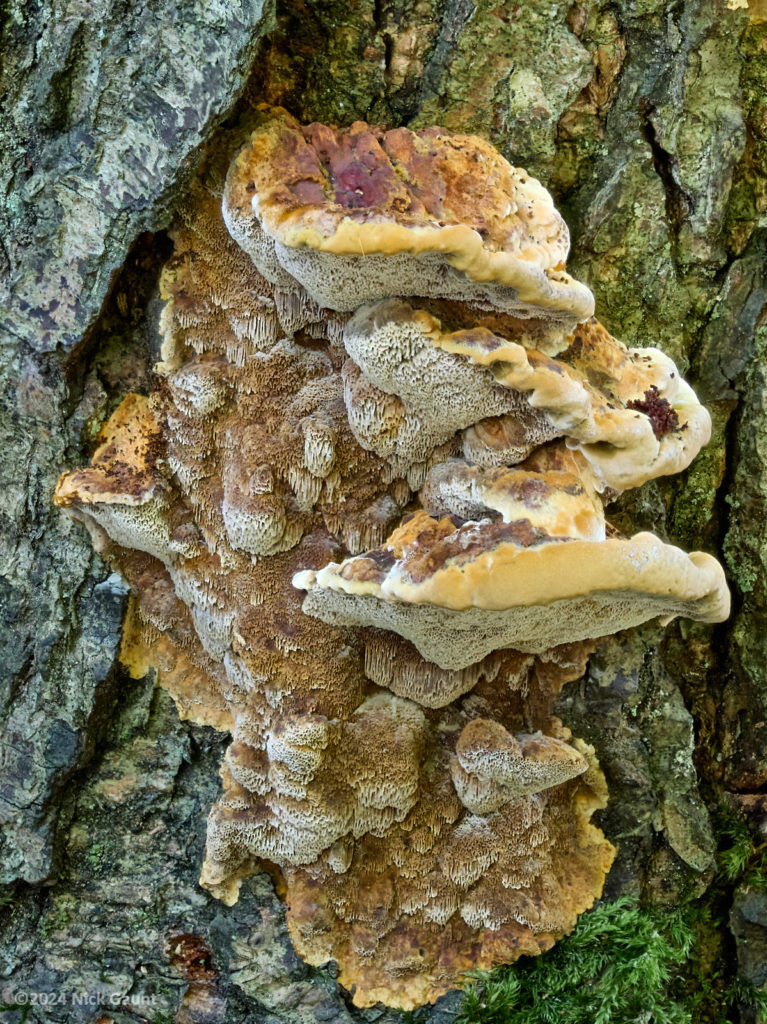Members attending this trip were very, very lucky in terms of the warm and sunny weather, in the levels of expertise and in the numbers of fungi identified. Andy Woodall together with Ian and Jonathan were present from the Mid-Yorkshire Fungus Group, Kevin Walker Head of Science at the BSBI was also present together with Fay Newbery, a plant pathologist. As a result, there were experts on hand continually during the day and all seventeen attendees were engaged to the full. The Washburn Valley was our main area of exploration.
Andy began by showing us some species he had collected from the previous week. These included the Scarlet Caterpillar fungus, which is found mainly in grassland and on woodland edges. The fruit bodies of this fungus stand out because of their bright orange colour. They grow from a buried dead caterpillar or pupa (very creepy).
Some of the fungi species we found during the day have quite magical names such as The Goblet, Wood Blewit, Beech Knight, Scarletina Bolete and Angel’s Bonnet. Others have quite ordinary names such as Common Earthball, Smoky Bracket and Alder Bracket but all of them are fascinating.
We came across the Earpick fungus, which nearly always grows from rotting pine cones. In place of gills there are tiny spines which hang down like stalactites.
One of the commonest wood-rotting fungi we found called Candle Snuff especially likes the rotting stumps of broad-leaved trees. The powdery substance seen on the upper branches in spring is made up of asexual spores. The sexual spores are produced later in the season, which gives the fungus two chances to reproduce.
David Alred led us on a short diversion uphill to spot Orange Peel fungus. We found this on damp, bare soil. David also showed us an area apparently inhabited by slow worms, voles and toads, which we duly noted.
We lunched in a warm sunny spot, and improvised with fallen tree trunks for our seating arrangements. We then proceeded further to reach the end of the lake and the boathouse, finding plenty of fungi as we went. Andy found Black Bulgar (or Soldier’s Buttons) which grows as an endophyte within oak trees. He explained that it is only when a tree is felled that this fungus begins to fruit.
We were excited at the sight of the Amethyst Deceiver and then the actual Deceiver. Judging by their names alone, Deceiver species do not appear to be popular since there are also Scurfy and Twisted Deceivers in existence.
Interspersed with fungi we had a dash of botany with Small Teasel (Dipsacus pilosus) which seems quite prolific in this area. Also the Cladonia lichen with its lovely scarlet spore-producing bodies which are so easy to spot..
Early in the day we had come across Nostoc sp. which at first glance looks like a fungus, although in fact it is a bacterium. Its common names include star jelly, witch’s butter and mare’s eggs. And as we headed back to the car park, we also found Ergot, growing on False-brome. This fungus produces alkaloids that are highly toxic when ingested by humans and livestock.
And finally, the Washburn Award for the most beautiful and exquisite fungus this year goes to the Porcelain Fungus, Mucidula mucida!
Andy’s extensive list (over 80 species) is attached, together with Fay’s list of micro fungi. Our thanks go to him and his Mid-Yorkshire cohorts for their infectious enthusiasm, to Kevin and to Fay and indeed to all the attendees. It was such a wonderful day.
Sonia Starbuck
